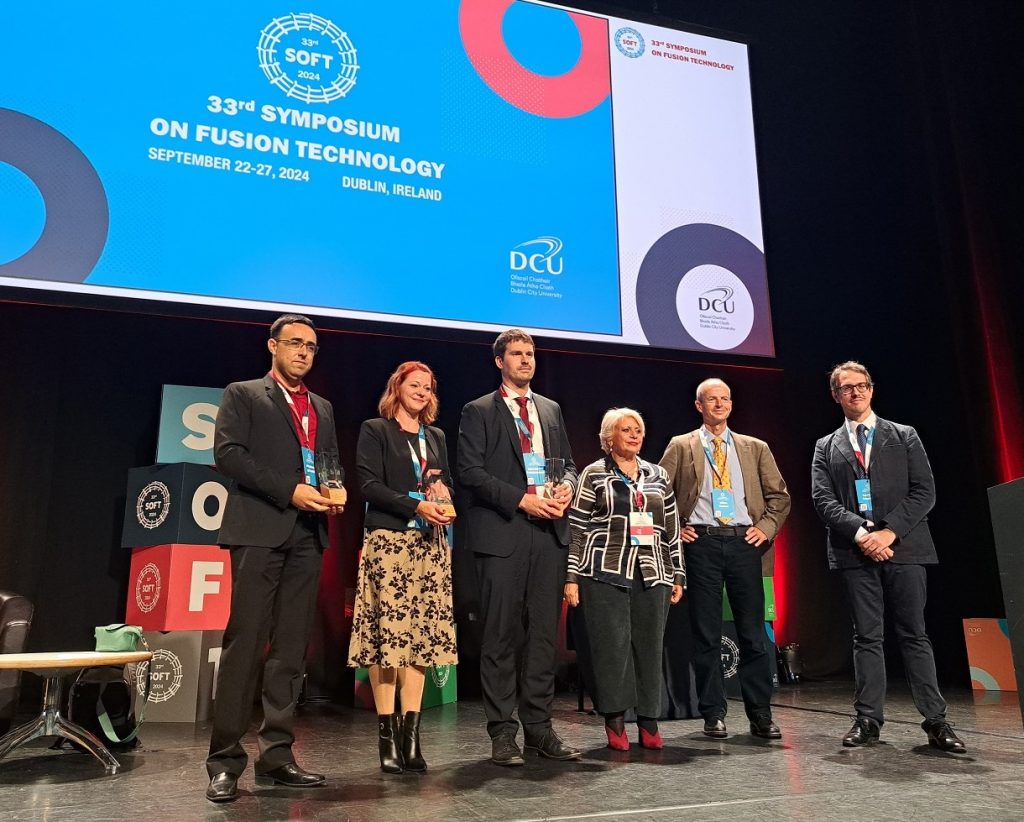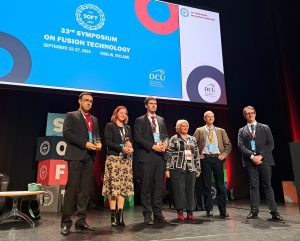The Immersive Ventilated Suit for Interactive Nuclear Operations Simulations (T-VISION) project won 3rd prize for innovation at the latest Symposium on Fusion Technology (SOFT), held in Dublin from 22 to 27 September 2024 and attended by around 1,000 people.

CEA-IRFM’s Virtual Integration Platform for Engineering & Remote Handling (VIPER) uses advanced simulation tools to help design future fusion power plants, for operations involving human or robotic intervention in a hostile environment. These tools are used not only for the WEST tokamak, but also for ITER and the future DEMO power demonstrator.
For ever more realistic simulations, a T-VISION ventilated suit prototype dedicated to virtual simulations has been developed in partnership with Matisec, a company specialising in the manufacture of protective suits for constrained environments. This device makes virtual simulations more realistic by integrating the postural adjustments required by this type of suit, and also requires management of the umbilical to provide breathable air. It is equipped with optical and inertial sensors, instrumented gloves and depth cameras. Thanks to a virtual reality headset, the operator is immersed in a life-size environment and his movements are recorded. This makes it possible to assess the accessibility and postures of workers, analyse the feasibility of operations and optimise intervention scenarios.
This innovation offers an unrivalled level of immersion, enabling the wearer to evolve in a representative environment during simulations for various scenarios in a dosing environment. These immersive simulations can be used at every stage in the life cycle of a component, from the preliminary design phase to the training of future operators when the installation is not yet operational, right through to the maintenance and dismantling phases.
The announcement of the winners of the Innovation Awards is a highlight of the SOFT conference. Joanna Drake, Deputy Director-General for Research and Innovation at the European Commission, presented the awards, which recognise innovative fusion research projects that promote collaboration between researchers and industry. The first prize was awarded to Petra Jenus (JSI, Slovenia) for the development of a tungsten carbide-reinforced material for DEMO’s divertor applications. Alexander Feichtmayer (IPP, Germany) won second prize for a new installation that enables fusion materials to be tested in real time under simulated power plant conditions. Finally, third prize went to Stéphane Gazzotti (CEA-IRFM, France) for the creation of this ventilated suit for immersive simulations of interventions in nuclear environments.
The dynamic activities around the CEA-IRFM’s VIPER platform have led to collaboration with the CEA-LIST, in particular on immersive simulation themes that take into account the physical laws of interaction and on the development of tools for digital continuity in connection with model-driven engineering (MBSE). Finally, to integrate nuclear constraints into studies of future fusion power plants (ALARA approach, dose calculations, dismantling studies), robotic intervention simulations are also being set up. This dynamic within the CEA-IRFM has not only led to significant advances in nuclear simulations, but has also led to the creation of the Atom XR start-up, which offers these innovations to the industrial sector.



